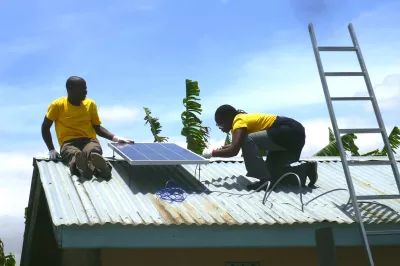Digital Finance: Catalyzing New Energy Business Models
Over 1.3 billion people worldwide live without access to electricity, and another 1 billion people have unreliable access to national electricity grids. Access to electricity is essential for economic livelihood, health, safety, educational achievement, and quality of life. Energy poor consumers – people whose well-being is negatively affected by very low consumption of modern energy – are forced to spend a significant amount of their income on costly, inefficient, and polluting alternatives. In off-grid areas of Sub-Saharan Africa, it is common for households to spend $70-110 annually just to meet their basic needs, primarily spent on kerosene, disposable batteries, and mobile phone charging. Kerosene-based lighting products pose significant health and environmental risks at the household level, including indoor air pollution, severe burns, structural fires, and poisoning due to accidental ingestion.
Modern, small-scale solar solutions now on the market are designed to meet the needs of the energy poor, and distribution models are beginning to reach deep into rural areas. Yet the vast majority of potential consumers cannot afford the high upfront cost of these solar solutions. End-user financing remains a major challenge, as most energy poor consumers lack access to financing options that spread this investment over a time period that fits with their household budget. In most markets, formal finance providers have shown limited appetite to design products for energy poor requirements, and energy product and distribution companies lack the ability to directly finance end-users.
Recent expansion of digital financing solutions makes it possible to bridge these financing gaps, delivering modern electricity to energy poor consumers in ways that were not possible a decade ago. Mobile payments have dramatically reduced collection costs, and product-embedded technology has helped to tie the usage of electricity to receipt of payments, helping to mitigate financing risks. The energy access sector has experienced significant momentum in the past few years, with at least 25 companies actively delivering pay-as-you-go (PAYG) solar solutions across Africa, Asia and Latin America. At least 150,000 PAYG products have been sold globally, and another 100,000 customers will access modern energy via PAYG solar products by the end of 2014.

A new paper from CGAP provides an overview of the digitally-financed energy access sector, and highlights advancements in business models and product offerings of PAYG solar companies. The paper also offers specific explanations of the financing terms of these systems, which hasn’t been previously documented elsewhere.




Add new comment